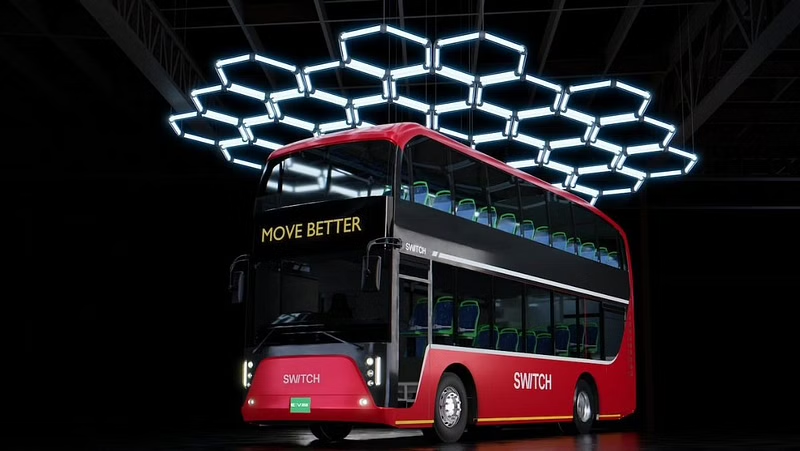
The electric double-decker bus
The visual of Mahendra Singh Dhoni lofting a cricket ball almost into the stratosphere at Mumbai’s Wankhede Stadium to help India win the 2011 ICC Cricket World Cup is etched into the memory of all but the youngest Indians. A day later, the Indian cricket team had taken an open-top double-decker bus from Mumbai’s public transport operator, BEST, and paraded the trophy down the iconic Marine Drive. That tournament was a swansong for Sachin Tendulkar’s white-ball career. It also inadvertently became the swansong for the double-decker bus.
The open-top double-decker bus in question survived a few more years, even doing a few bar crawls in South Mumbai, one of which I even attended. Although you’d forgive me if I tell you that I don’t remember much of that night. But in Mumbai and Kolkata, and to an extent even Delhi, the double-decker quickly faded away from memory. Manufacturers, particularly Ashok Leyland had stopped manufacturing them and public transport operators across India, swimming in a tidal wave of debt, stopped buying them. The occasional double-decker could still be found at a depot, but none on the roads.
So when Minister for Road Transport and Highways, Nitin Gadkari, unveiled a brand-new double-decker in Mumbai recently, there was a lot of excitement on social media. Even more so, because this new bus is an electric vehicle. The EV22 is being built by Switch Mobility, the electric subsidiary of Ashok Leyland and the company expects to have 200 of these buses up and running in Mumbai by the middle of next year, the first deliveries starting in early-2023.
The nostalgia
Mahesh Babu, chief executive officer, India, Switch Mobility highlighted that double-deckers might have gone out of fashion, thanks to insufficient investment in buses by state transport undertakings, but they are supremely capable devices. “In fact, they are just about nine meters long, and while they take up 81 per cent of the footprint of a longer 12-meter bus, they provide 41 per cent more capacity.”
Of course, there are additional costs to a double-decker but Babu also pointed out how such buses are iconic and imprint on the memory: “People in Mumbai really want this bus to come because those who grew up with double-deckers have sat in the front seat on the top deck with the wind in their hair,” Babu said. Since these buses will be air-conditioned, the ‘wind in the hair’ aspect will have to wait till a non-AC version is launched, which should be available soon.
The capability of the EV22
Babu said that the bus did the 1,400 km between Mumbai and Chennai on its own power, stopping to charge every couple of hundred kilometers. That was made possible also because Switch Mobility has fitted a ‘double gun’ charging system, that is two chargers can be fitted to the bus at a single time to charge separate parts of the battery, things moved smoothly enough.
But India has a severe shortage of public transportation buses, for both intracity and intercity transport. Most state transport undertakings are saddled with massive amounts of debt. Think of it like an Air India around the neck of every state government and in some cases multiple Air India’s. And electric buses are not cheap thanks to the high initial costs of the batteries, making them almost double the cost of diesel or CNG buses. Although operating costs are a tenth of internal combustion engines, new models of ownership and operation will have to be found if India is to increase the number of buses, which stands at around 1.2 per 1000 population, a pitifully low number, compared to 8.6 per 1000 in Thailand.
Babu believes that India will be able to dramatically increase the number of buses in its public transport fleet by 2030 to over six buses per 1000 population. “We cannot keep on building more roads in cities and while metro systems are very effective, they are also extremely expensive and buses will still be needed for feeder service and last-mile connectivity.”
Switch Mobility have based the EV22 on their EV12 platform, which they launched a few months ago and whose initial batch is already operating in Bengaluru. In fact, Switch Mobility’s executive vice-chairman Andy Palmer in a tweet highlighted how one of these new electric buses was successfully wading through the water during the recent Bengaluru floods, a picture which helped dissipate the doubts that many have about the safety of electric buses, particularly in the light of recent fires in electric two-wheelers. “Established manufacturers such as ourselves have network operations centres where we will monitor every single bus and we will know very quickly if there is a problem with a battery pack.”
One innovation by the Niti Ayog, the Gross Cost Contract (GCC) model, which BEST was one of the first public transport undertakings to adopt, allows for a system where the bus is owned and operated by a third-party, often the manufacturer themselves, while the state transport undertaking promises to pay a fixed operating cost per kilometre. This model, which is a version of a public-private partnership, has now been adopted by many states.
Babu also sees a future in Net Cost Contract (NCC) models, particularly in cities like Kolkata where there are a large number of private buses. In this case, the operator-owners will pay a fixed sum to the state per kilometre for operating the bus. “Financing for electric buses will be vital but the government realises that this is an urgent need for India,” Babu pointed out.
Electric buses will be transformative, not just for air quality but also for ride comfort. And if the buses are inducted in the number that Mahesh Babu predicts, it might even convince the odd car user to switch to a bus. And that is the ultimate goal.
Courtesy:The Print |
